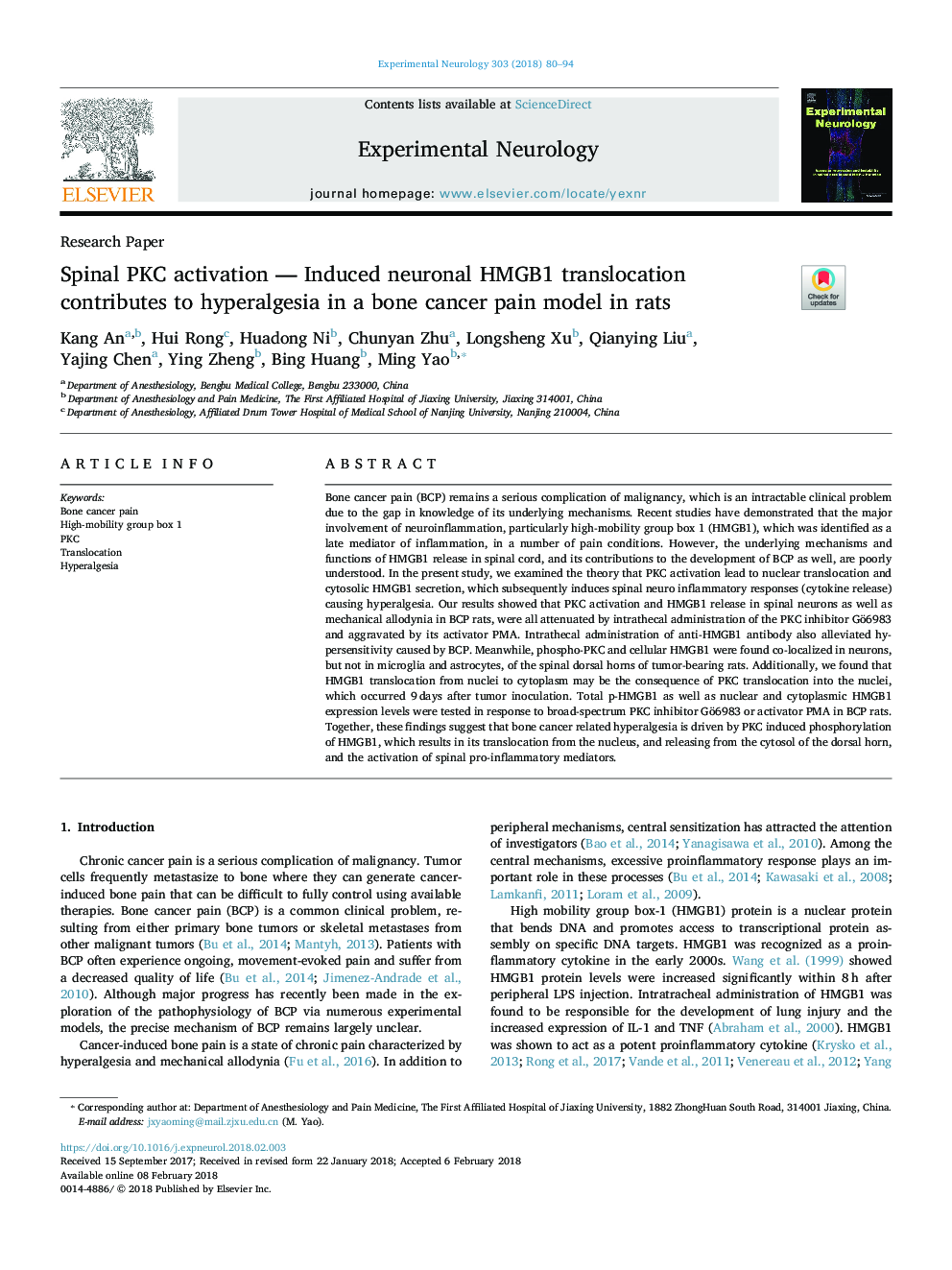| کد مقاله | کد نشریه | سال انتشار | مقاله انگلیسی | نسخه تمام متن |
|---|---|---|---|---|
| 8684659 | 1580134 | 2018 | 15 صفحه PDF | دانلود رایگان |
عنوان انگلیسی مقاله ISI
Spinal PKC activation - Induced neuronal HMGB1 translocation contributes to hyperalgesia in a bone cancer pain model in rats
دانلود مقاله + سفارش ترجمه
دانلود مقاله ISI انگلیسی
رایگان برای ایرانیان
کلمات کلیدی
موضوعات مرتبط
علوم زیستی و بیوفناوری
علم عصب شناسی
عصب شناسی
پیش نمایش صفحه اول مقاله

چکیده انگلیسی
Bone cancer pain (BCP) remains a serious complication of malignancy, which is an intractable clinical problem due to the gap in knowledge of its underlying mechanisms. Recent studies have demonstrated that the major involvement of neuroinflammation, particularly high-mobility group box 1 (HMGB1), which was identified as a late mediator of inflammation, in a number of pain conditions. However, the underlying mechanisms and functions of HMGB1 release in spinal cord, and its contributions to the development of BCP as well, are poorly understood. In the present study, we examined the theory that PKC activation lead to nuclear translocation and cytosolic HMGB1 secretion, which subsequently induces spinal neuro inflammatory responses (cytokine release) causing hyperalgesia. Our results showed that PKC activation and HMGB1 release in spinal neurons as well as mechanical allodynia in BCP rats, were all attenuated by intrathecal administration of the PKC inhibitor Gö6983 and aggravated by its activator PMA. Intrathecal administration of anti-HMGB1 antibody also alleviated hypersensitivity caused by BCP. Meanwhile, phospho-PKC and cellular HMGB1 were found co-localized in neurons, but not in microglia and astrocytes, of the spinal dorsal horns of tumor-bearing rats. Additionally, we found that HMGB1 translocation from nuclei to cytoplasm may be the consequence of PKC translocation into the nuclei, which occurred 9â¯days after tumor inoculation. Total p-HMGB1 as well as nuclear and cytoplasmic HMGB1 expression levels were tested in response to broad-spectrum PKC inhibitor Gö6983 or activator PMA in BCP rats. Together, these findings suggest that bone cancer related hyperalgesia is driven by PKC induced phosphorylation of HMGB1, which results in its translocation from the nucleus, and releasing from the cytosol of the dorsal horn, and the activation of spinal pro-inflammatory mediators.
ناشر
Database: Elsevier - ScienceDirect (ساینس دایرکت)
Journal: Experimental Neurology - Volume 303, May 2018, Pages 80-94
Journal: Experimental Neurology - Volume 303, May 2018, Pages 80-94
نویسندگان
Kang An, Hui Rong, Huadong Ni, Chunyan Zhu, Longsheng Xu, Qianying Liu, Yajing Chen, Ying Zheng, Bing Huang, Ming Yao,